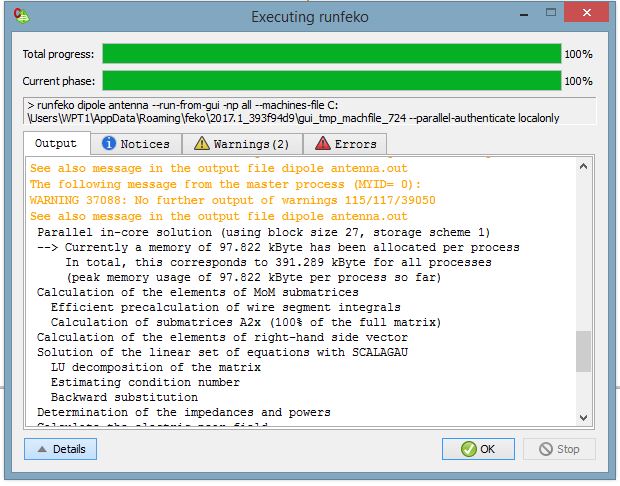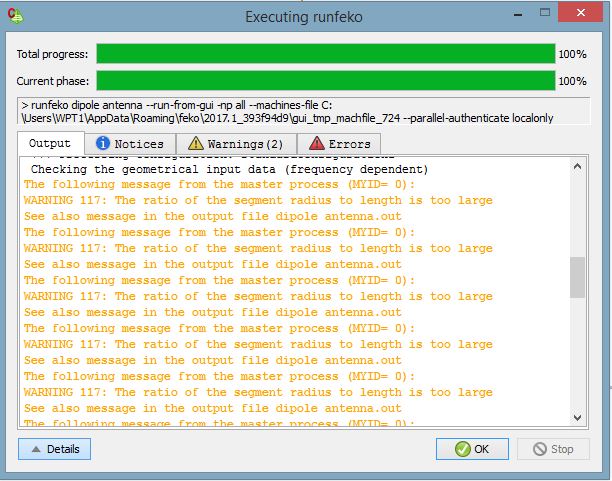Hi expert Feko,
I would like to ask FEKO team about the warning that I received when I have tried to simulate my dipole antenna using wire port. What does the warning mean so that I can make improvements to my model to achieve the results?
Thank you,
attach is the warning message.
<?xml version="1.0" encoding="UTF-8"?>
<?xml version="1.0" encoding="UTF-8"?>